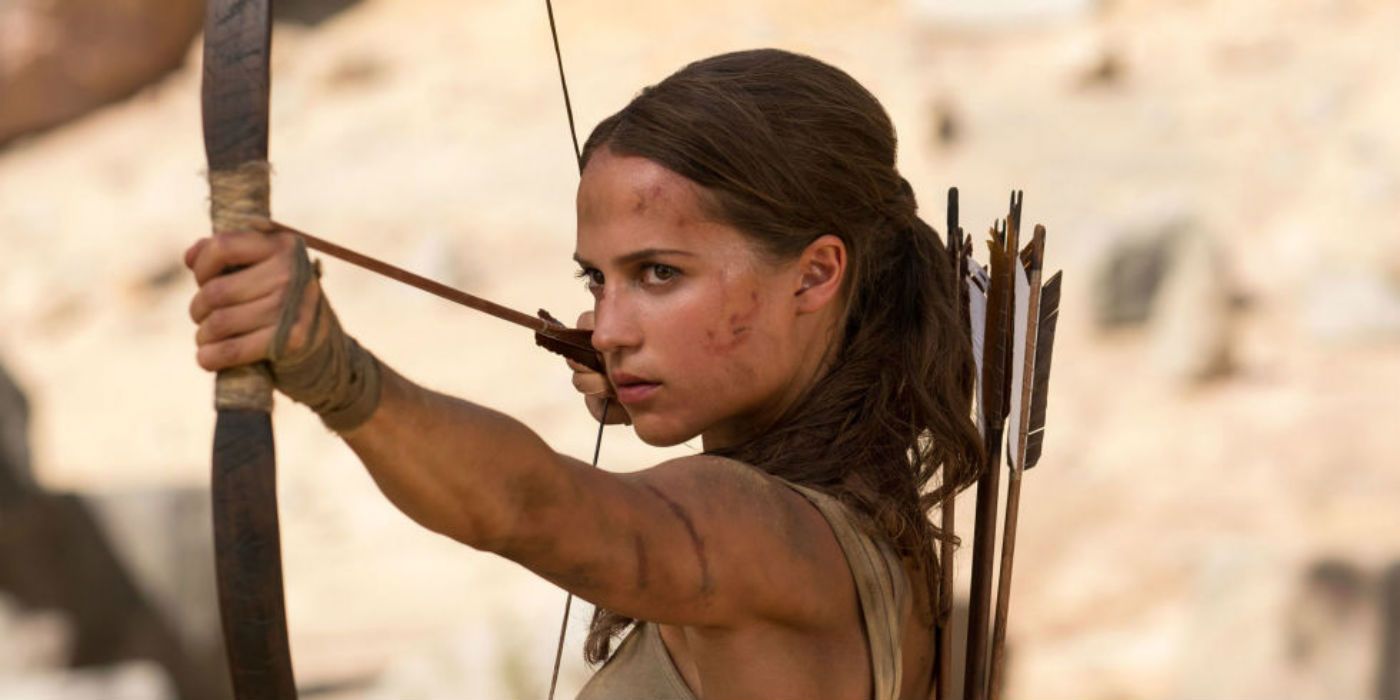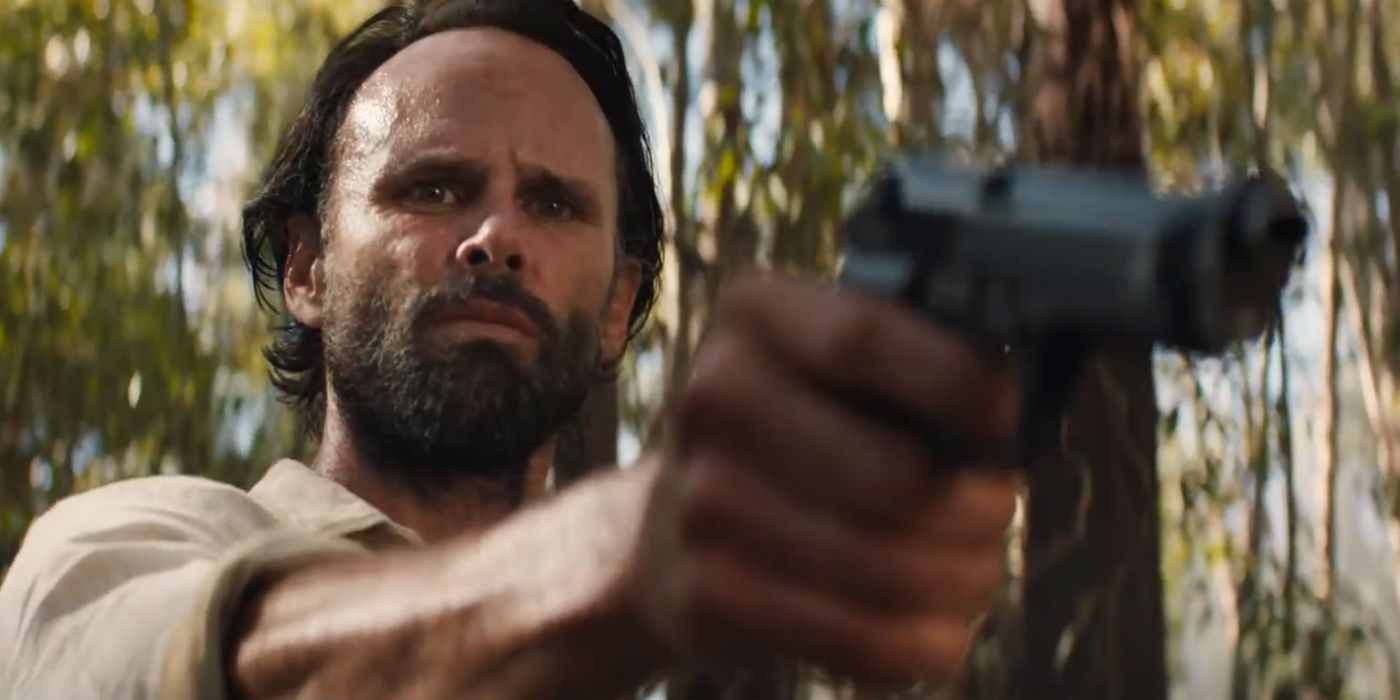On the surface, it might seem like staving off the specter of Angelina Jolie's campy, early '00s Tomb Raider duology -- the last time Lara's been on the big screen -- would be the biggest challenge facing the new Tomb Raider franchise, but a weak script, confusing stakes and predictable formula prove that avoiding over-the-top genre cringe might just be the only real hurdle new Tomb Raider managed to clear.
A reboot in every sense of the word, Tomb Raider restarts the iconic video game character's film universe from the very beginning, setting up an origin story for a younger version of Lara Croft (Alicia Vikander), as she sets out on her very first tomb raiding adventure on a mission to uncover the truth of her father, Richard Croft's (Dominic West) disappearance. Along the way, she teams up with the handsome-but-surly Lu Ren (Daniel Wu) and is made to face off against the villainous Mathias Vogel (Walton Goggins), in what starts as a small-scale rescue mission between Lara and her dad and ends as a conspiracy theory-ridden fate-of-the-world near-miss at the apocalypse.
RELATED: Who’s Who in the Tomb Raider Reboot
In what amounts to a head-scratching, ham-fisted stab at an emotionally resonant father-daughter adventure story, the movie borrows elements wholesale from the 2013 Tomb Raider video game without any real effort to translate them into a new context. We learn that Richard Croft's disappearance relates to his obsession with the ancient and arcane -- a hobby he apparently picked up after the death of Lara's mother -- and he's been hunted by a vaguely defined shadowy order known as Trinity who are similarly invested in occult relics. The artifact he'd been hunting just before he vanished was an entity known as Himiko, an ancient Japanese queen who had dominion over death; still entombed somewhere today on a mysterious and cursed island in the Devil's Sea.
Lara uses dear old dad's journals to retrace his steps and get to the bottom of his vanishing act once and for all. What follows is less a movie and more a 90-minute montage of stunt sequence after stunt sequence. The moment Lara turns the corner from "stubborn orphan" to "determined adventurer," she is all but thrown into a meat grinder -- from nearly drowning during a headache inducing, strobe-lit storm as she travels to the island, to being forced to strangle a man to death as they wrestle in the mud, Tomb Raider seems to exalt in spotlighting the brutality of Lara's exceedingly bleak circumstances.
Hardly a moment goes by where the camera doesn't linger on Lara's dirt-streaked, sweat-stained, bloodied face as she gasps, groans, screams and moans with the effort of just surviving -- something that, on paper, was probably designed to prove to the audience that this Lara is "just starting out" in this whole hero business, and in the video game source material probably serves to really up the stakes for the player, but in practice here in the film dangerously toes the line between action-adventure and torture porn. Watching Lara brutalized at every turn certainly does evoke the same nail-biting anxiety that you'd get during a quick time cut-scene event while playing a game -- but it lacks any of the satisfaction that comes with success. You, the viewer, aren't actually in control here. You're a bystander, not a participant, and that makes all the difference.
That being said, you really have to give Alicia Vikander a lot of credit for being willing to tackle a role like this. The 29-year-old actor already netted herself an Academy Award for her role in The Danish Girl and made some serious waves for her work in Ex Machina, two movies that certainly paved a path for her to enjoy the relative comforts of a career playing artistically inclined, introspective characters in somber, award-winning films -- something that both Lara Croft and Tomb Raider most assuredly are not.
But Vikander's stellar performance isn't enough to rescue a story that falls apart with just the slightest bit of scrutiny. Nor does it change the fact that Lara is, frustratingly, never actually given a stand-up-and-cheer hero moment; there is no "hell yeah" fist pump at the third act turn, no real character evolution or growth -- just a young girl fighting for her life and just barely making it through. It all feels strangely joyless and bleak, especially amidst the extremely Indiana Jones-flavored pulp adventure set dressing and accouterment.
Similarly, both Walton Goggins and Daniel Wu seem to be doing the best they can with what they've been given. Goggins' villainous Vogel really sells the creep factor in a way that only Goggins can, but as far as the story is concerned, Vogel makes little to no sense. Why is he on the island? What stake does Trinity actually have in Himiko? If he doesn't believe in the occult, why did he get involved in the first place?
RELATED: What Separates Tomb Raider From All Those Other Video Game Movies
Wu's Lu Ren manages to garner some sizzling chemistry with Lara in the scant few scenes they share together but it's ultimately squandered, leaving Lu Ren feeling like a time-sinking plot device rather than a character -- something even the most smoldering of shared glances just couldn't redeem.
If you're a diehard fan of the recent Tomb Raider video games, there's likely something here for you. The movie admittedly does a serviceable job of recreating the look and feel of the recent game installments, even if it commits to the bit a little too hard at points -- but if you're not already bought and sold for either the nostalgia factor or the pre-packaged fandom winking, this is probably one you won't be sad to skip.
Tomb Raider opens in theaters on March 16.


